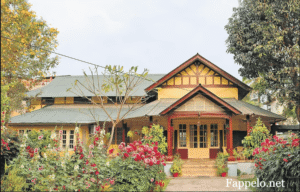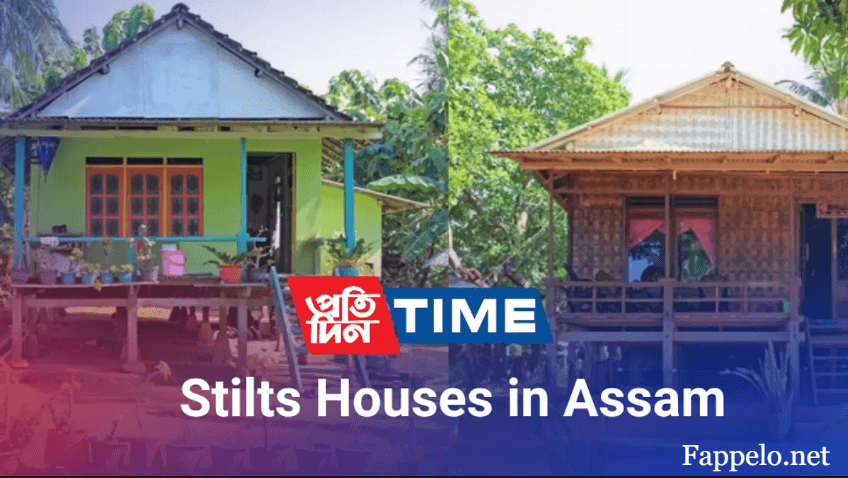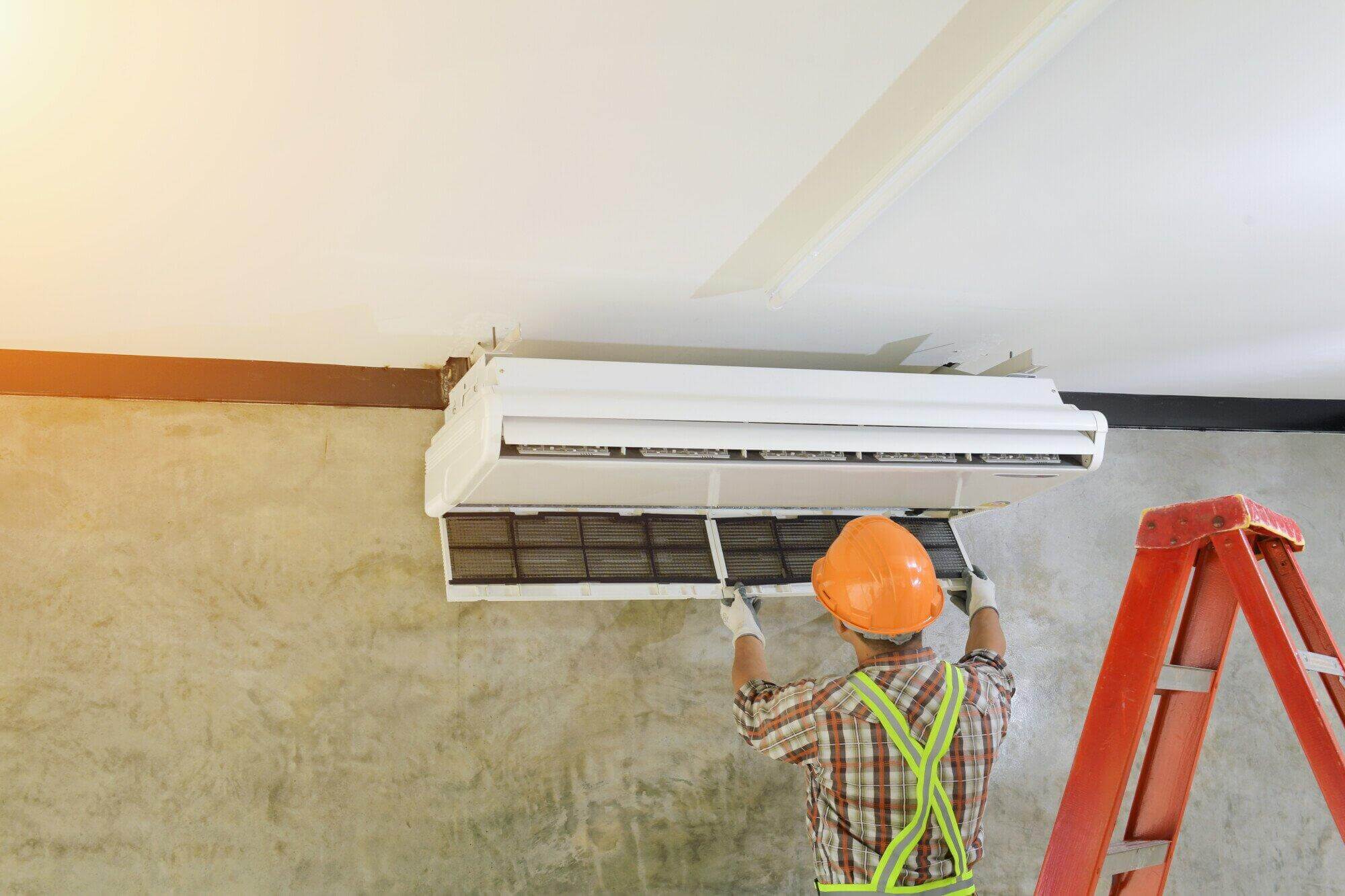Introduction
In Assam, a state known for its rich culture, scenic beauty, and unique architecture, one striking feature stands out—many homes are built on stilts. These elevated structures, though prevalent in various parts of the world, are especially common in Assam, where the environment and historical practices have shaped the way people build their homes. But why do the people of Assam build their houses on stilts?
This architectural style is not just a tradition, but a practical solution to the region’s climate, geography, and historical needs. The reasons behind stilt houses in Assam are multifaceted, ranging from protection against floods to cultural significance. Let’s explore this fascinating aspect of Assam’s building practices in depth.
The Geographic and Climatic Challenges of Assam

Assam’s Terrain and Floods:
Assam, located in the northeastern part of India, is characterized by its riverine topography and heavy rainfall. The state is crisscrossed by several rivers, including the Brahmaputra, and is prone to annual flooding.
During the monsoon season, these rivers swell, inundating the surrounding areas. As a result, homes built on the ground are vulnerable to floodwaters that can destroy property and make living conditions unbearable.
Elevated Homes as a Flood-Resistant Solution:
One of the main reasons why homes in Assam are built on stilts is to protect them from floodwaters. By elevating the structure, families can ensure that their homes remain dry even during the heaviest of monsoons. This design is an ingenious solution to the recurring threat of flooding, which is a natural occurrence in the region. With the house raised off the ground, the risk of water damage to the structure and belongings is significantly reduced.
Protection from Wildlife:
In addition to flood protection, stilt homes also serve as a barrier between inhabitants and local wildlife. Assam is rich in biodiversity, with various animals, including elephants and wild boar, occasionally roaming through human settlements. Building homes on stilts helps keep these animals at bay, ensuring that people are safe from potential encounters.
Cultural and Historical Significance
A Long-Standing Tradition:
The tradition of building homes on stilts in Assam is deeply rooted in the region’s culture and history. This practice dates back centuries, long before modern building techniques and materials were available.
The indigenous communities, such as the Bodos and the Assamese people, have relied on stilt homes for generations. These elevated structures are not just functional, but also an integral part of the cultural identity of the region.
Design Variations Across Communities:
While the general concept of building on stilts is common, the design of stilt homes in Assam varies across different ethnic communities. For example, the Mising people, one of Assam’s largest indigenous groups, have their own distinct style of stilt homes, known as “Chang Ghar.”
These houses typically have a steep, slanted roof and are built on wooden stilts. The layout is designed to suit the community’s agricultural lifestyle, with ample space for storage of crops and livestock beneath the house.
Symbolism and Spiritual Significance:
For some communities, stilt houses also have spiritual significance. In certain cultures, the space beneath the house is considered a sacred area, often used for rituals or community gatherings. The elevated design symbolizes a connection to the spiritual world, representing a bridge between the earth and the heavens.
Practical Benefits of Stilt Houses in Assam
Ventilation and Temperature Regulation:
Another practical benefit of building homes on stilts is improved ventilation. Assam’s climate can be hot and humid, particularly in the summer months. By raising homes off the ground, air can circulate freely beneath the house, helping to keep the living spaces cooler.
The design also prevents the buildup of moisture, which can contribute to mold growth and other damp-related issues.
Minimizing Dampness and Pest Problems:
Rising above the damp, humid ground also helps in minimizing the risks associated with moisture and pests. In a region where humidity levels are high, the foundation of a house can often become a breeding ground for mold, mildew, and insects. By elevating the structure, stilt houses reduce the chance of such infestations and maintain a healthier living environment.
Sustainable Building Materials:
The use of locally sourced, sustainable materials is another reason why stilt houses have persisted in Assam. The wooden stilts and bamboo used in these homes are both renewable and durable, making them ideal for the region’s environment. Bamboo, in particular, is abundant in Assam and is an eco-friendly choice for construction. The materials are also lightweight, making it easier to repair and rebuild homes after natural disasters.
The Modern Influence on Stilt House Design
While stilt houses in Assam have maintained their traditional forms, there has been some modernization in their construction. The use of concrete and steel has started to replace wood in some areas, allowing for more durable and longer-lasting homes. Modern amenities such as electricity, plumbing, and internet connectivity have also found their way into stilt homes, transforming them into more comfortable and livable spaces.
However, the traditional stilt house design still holds strong, especially in rural areas, where it remains an efficient and culturally significant way to build homes.
Challenges and Sustainability of Stilt Homes in Assam
Maintenance and Durability:
One of the challenges of building houses on stilts is the maintenance required to keep the structure in good condition. Over time, wooden stilts can rot or weaken, particularly in areas with high moisture levels.
Homeowners must regularly inspect and replace the stilts to prevent structural damage. The ongoing maintenance can be a burden for some families, especially in rural areas where resources may be limited.
Climate Change and Rising Flood Levels:
Another challenge that stilt houses in Assam face is the changing climate. Global warming has led to unpredictable weather patterns, and floodwaters may rise higher than before. This makes the stilt house design less effective in some cases, as even elevated structures could be at risk during extreme floods.
Adaptation to Modern Needs:
While traditional stilt houses are well-suited to the environment, modern living demands greater convenience and comfort. As the population grows and urbanization spreads, people may find it difficult to integrate contemporary infrastructure into the traditional design. Adapting stilt houses to accommodate larger families or commercial purposes without losing the essence of the design remains an ongoing challenge.
Conclusion
Houses in Assam are built on stilts for a variety of practical, cultural, and environmental reasons. This traditional architectural style has helped the people of Assam adapt to the region’s unique climate, geography, and challenges. From flood protection to wildlife deterrence, stilt houses are a functional solution to many of the issues faced by residents in this part of India.
Despite the advent of modern construction techniques, the stilt house remains a symbol of resilience, sustainability, and cultural heritage. As climate change and urbanization continue to alter the landscape, the future of stilt homes in Assam will depend on how well these traditional structures can adapt to contemporary needs while maintaining their essential characteristics.
If you’re planning to build a house in Assam or are simply curious about the region’s architectural traditions, understanding the significance of stilt homes can provide valuable insights into how the people of Assam have mastered the art of living in harmony with their environment.



